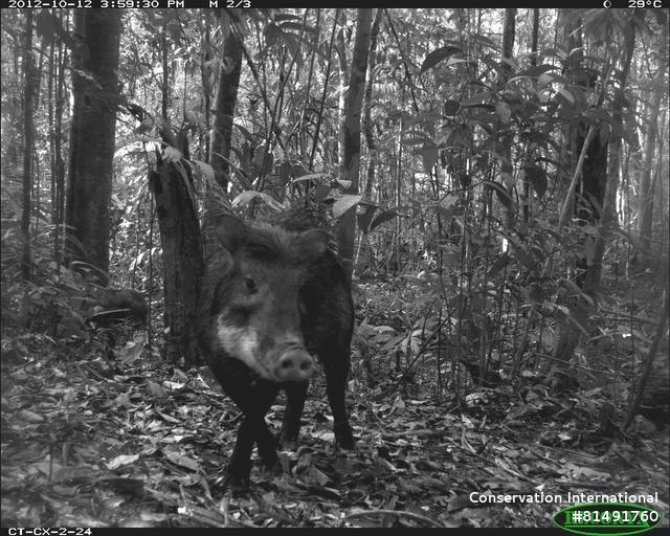New research shows that half of the mammal species in tropical forests adjust their behaviours in response to the moon's phases. These findings underscore how light conditions can impact wildlife conservation efforts.
A recent study using automatic wildlife cameras across three continents has shed light on how the moon's phases affect the behaviour of tropical forest mammals. Half of the species studied altered their activity levels or timing, or both, in response to the full moon. The findings suggest that even in some of the darkest places on earth - the floors of tropical forests - the moon's phases can influence animal behaviour. This impact could be even more pronounced in degraded and fragmented forests.
"Imagine playing hide-and-seek in a dark room, and then somebody lights a candle," says Richard Bischof, professor at the Norwegian University of Life Sciences (NMBU) and first author of the article. "The light, even if it is weak, may make it easier for you to find your way around the room. But if you are the one hiding, you suddenly become a lot easier to detect." In the same way, extra light changes the conditions for predators and their prey inhabiting tropical forests. But the stakes are much higher.
Half of the species had a reaction
In the study, an international team of researchers have analysed 2.1 million images from wildlife cameras from 17 protected forests on three continents. The wildlife images are collected by the Tropical Ecology Assessment and Monitoring Network. In total, 86 mammal species were recorded. Twelve species displayed strong avoidance of moonlight during night, while only 3 species exhibited a strong attraction to moonlight.

Half of all the species responded to lunar phases. Either by changing their nocturnal habits, altering their overall activity levels, or both." Avoidance of the full moon was more common, exhibited by 30% of all species, compared to 20% of species that showed attraction. Nocturnal species, especially rodents, were over-represented among species that avoided the full moon.
Why should we worry about how animals respond to moonlight?
"The study offers an unprecedented look at how the lunar cycle shapes wildlife behaviour in tropical forests," says Douglas Sheil professor at Wageningen University & Research. "For many forest animals, a bright moon doesn't just help illuminate the night - it dictates the agenda. From rodents to deer, we've uncovered a spectrum of responses to moonlight. Like sun-shy Halloween trick-or-treaters, many tropical mammals prefer the dark - but instead of seeking candy, they're balancing their survival."

The key takeaway from the research is that light affects animal behaviour. It raises further questions about how changes in illumination affect species activity. Other conditions that increase light levels at forest floors include changes in canopy cover due to logging, and artificial illumination, such as road lights and buildings.
More light - less activity
Despite humanity's massive impact on the globe, we still know remarkably little about the implications of illumination on the activity of most mammals. The higher prevalence of avoidance of the moon in the study suggests there may be more losers than winners when illumination increases in tropical forests. Moreover, almost all species that responded negatively to moonlight did so at least in part by reducing their overall activity during periods with full moon. If these results extend to artificial light, loss of dark nights could curtail the amount of time animals invest into foraging and other important activities. There is a risk that we are fundamentally altering both species composition and species interactions in tropical forest communities through light conditions alone.
The influence of natural and artificial light raises important questions and concerns in wildlife conservation and ecosystem functioning. Halloween is just around the corner; and as it turns out, the moon's influence extends beyond spooky tales and into the dark midst of our tropical forests. Recognising this can help us shape more effective conservation strategies for the future.






